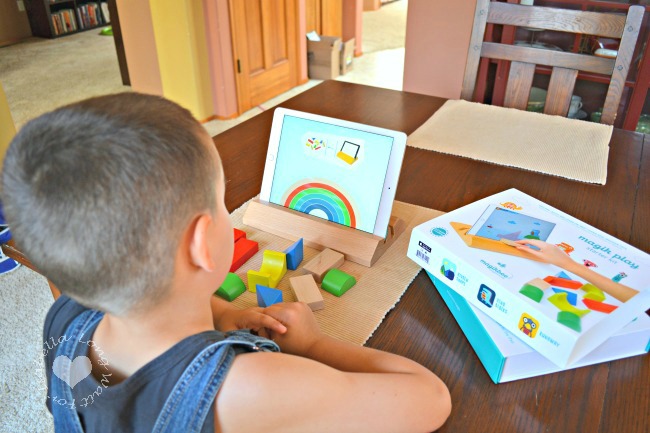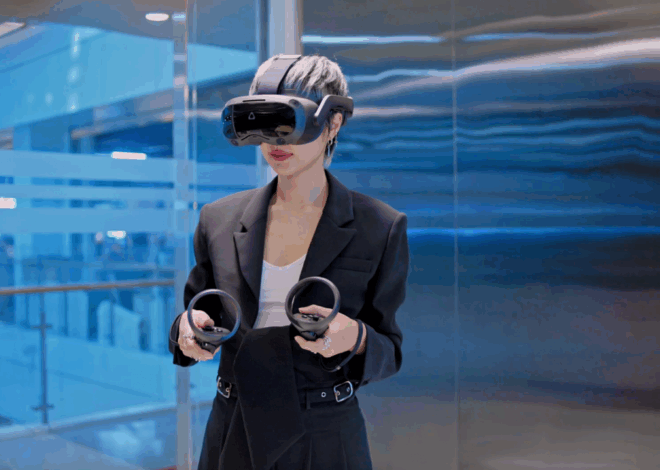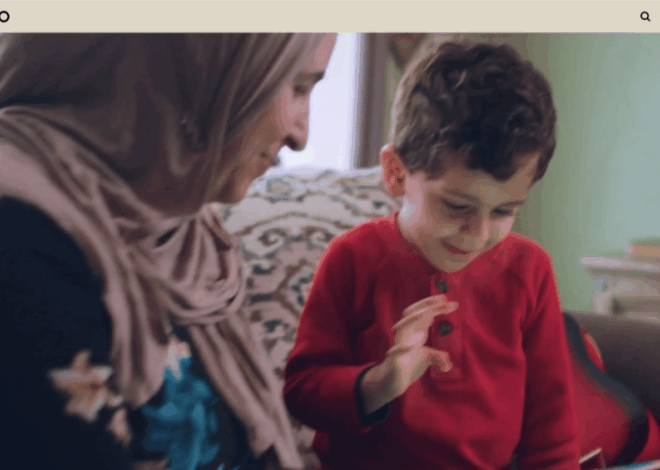
The Phygital Revolution: A Deep Dive into AR Toy News and the Future of Interactive Play
The modern toy box is undergoing a profound transformation. Where wood, plastic, and plush once reigned supreme, a new category of play is emerging, one that seamlessly blends the tangible with the digital. As children become increasingly native to screens, the traditional toy industry faces an existential challenge: how to remain relevant in a world dominated by apps and digital entertainment. The answer, increasingly, lies in Augmented Reality (AR). AR is not merely a gimmick; it’s a powerful bridge creating “phygital” (physical + digital) experiences that captivate, educate, and entertain in entirely new ways. This evolution is at the heart of the latest AR Toy News and represents a paradigm shift in how we think about play. This article delves into the technology powering this revolution, explores its real-world applications, and analyzes the critical implications for developers, parents, and the industry at large, touching upon the intersecting worlds of AI Toy News and Smart Toy News that define this exciting frontier.
The Rise of Phygital Play: Understanding the AR Toy Ecosystem
The convergence of physical toys and digital experiences is creating a vibrant new ecosystem. At its core, this movement is about augmenting, not replacing, traditional play. It leverages the technology children are already familiar with—smartphones and tablets—to add layers of interactivity, narrative, and discovery to the physical objects in front of them. This approach retains the developmental benefits of tactile play while satisfying the modern child’s appetite for dynamic, screen-based content.
What Defines an AR Toy?
An AR toy is a physical product—be it a building set, a collectible figure, or an educational puzzle—designed to interact with a dedicated software application. Using a smart device’s camera, the app overlays a digital layer of information, animation, or gameplay onto the real-world view of the toy. The magic happens when the digital content responds intelligently to the physical toy’s position, orientation, or specific features. This dynamic interaction is made possible by significant advancements in mobile processing power and sophisticated AR development kits like Apple’s ARKit and Google’s ARCore, which are central to any discussion in AI Toy App Integration News. The goal is to make the screen a magic window that reveals a hidden world connected to the toy, rather than just a passive viewing device.
Key Categories and Market Trends
The latest AI Toy Trends News shows AR technology being applied across a diverse range of toy categories, each with unique benefits:
- Educational & STEM Toys: This is arguably the most impactful application. AR can bring abstract concepts to life. Imagine a globe that, when viewed through a tablet, displays detailed 3D models of animals in their native habitats or shows weather patterns in real-time. The latest STEM Toy News and Educational Robot News frequently feature products that use AR to visualize coding commands or explain complex mechanical principles. Brands are creating products that fall under AI Learning Toy News, where an app can track a child’s progress on a physical puzzle and offer AR-based hints.
- Construction & Building Toys: Leading the charge in this area are brands like LEGO. Their Hidden Side and VIDIYO lines allowed kids to build physical sets and then scan them with an app to unlock interactive games, stories, and characters that inhabited their real-world creations. This is a prime example of what Robot Building Block News and Smart Construction Toy News are covering, showing how to extend play value far beyond the initial build.
- AI Collectibles & Interactive Dolls: For collectors and fans, AR adds a new dimension of engagement. An action figure can be scanned to trigger its signature moves in 3D, unlock special video content, or even battle another virtual character. This trend in AI Collectible Toy News is transforming static figures into dynamic story portals. Similarly, the world of Interactive Doll News is exploring how AR can bring a doll’s accessories or playhouse to life with animated characters and interactive stories.
- AI-Powered Companions: While many smart toys use internal robotics, AR can enhance their perceived intelligence and personality. The latest AI Plush Toy News might feature a teddy bear whose companion storybook triggers magical AR animations on every page. This also ties into Robotic Pet News, where a physical robot dog could chase a virtual ball projected onto the living room floor via an AR app.
The Technology Under the Hood: A Technical Breakdown of AR Toys
Creating a seamless and convincing AR toy experience requires a sophisticated interplay of hardware, software, and clever physical design. Understanding these technical components is crucial for appreciating the innovation driving the latest AI Toy Innovation News and for developers aiming to enter this market.

Core Components of an AR Toy System
Every AR toy experience is built on three pillars:
- The Physical Toy: The design of the toy itself is critical. It often incorporates specific visual cues, known as markers or trackers, that the AR application can easily recognize. These can be high-contrast geometric patterns, QR-code-like symbols, or even the unique 3D geometry of the toy itself. The latest Toy Factory / 3D Print AI News highlights how manufacturers are embedding these markers directly into the production process, while AI Toy Customization News explores how user-generated 3D printed parts can have unique, scannable markers for personalized AR content.
- The Smart Device: The smartphone or tablet acts as the central processing unit and the window into the augmented world. Its camera captures the real-world view, the processor runs the recognition and rendering algorithms, and the display presents the final composite image to the user.
- The AR Application: This is the software that orchestrates the entire experience. It contains the 3D models, animations, game logic, and, most importantly, the computer vision algorithms needed to detect and track the physical toy. The quality of the app is paramount, a frequent topic in AI Toy Reviews News.
AR Recognition and Tracking Methods
The “magic” of AR hinges on the app’s ability to understand where the toy is in physical space. There are several methods used:
- Marker-Based AR: This is the most common and reliable method for toys. The app is programmed to recognize a specific 2D image or pattern. When the camera sees this marker, it knows the precise position, orientation, and scale to use when overlaying the digital content. This is efficient and works on a wide range of devices.
- Markerless AR (SLAM): More advanced systems use Simultaneous Localization and Mapping (SLAM) technology. Instead of looking for a specific marker, the app identifies feature points in the environment—like the corners of a table or the texture of a floor—to build a map of the room. This allows digital objects to be placed on real-world surfaces and remain anchored even when the physical toy isn’t in view. This technology is often featured in AI Drone Toy News, where a drone might navigate a virtual obstacle course projected into a room.
- 3D Object Recognition: The most sophisticated approach involves training a machine learning model to recognize the physical toy from any angle. This provides the most seamless experience, as the entire toy becomes the marker. This requires significant processing power and is at the forefront of AI Toy Research News. The integration of advanced onboard chips, as discussed in AI Toy Sensors News, can assist in this process by providing additional data like orientation and movement.
AI and machine learning are becoming increasingly integral, enhancing everything from object recognition to enabling natural language processing in Voice-Enabled Toy News. A topic in AI Game Toy News might detail an AR game that adapts its difficulty based on a child’s real-world actions, creating a truly personalized play pattern managed by a central Toy AI Platform News.
Beyond Play: Broader Implications and Industry Insights
The rise of AR toys has ripple effects that extend far beyond the playroom. It is reshaping business models, creating new educational paradigms, and forcing a critical conversation about safety and ethics in the digital age. Staying informed through channels like AI Toy Exhibition News and AI Toy Startup News is vital for understanding these shifts.
Transforming Business Models and Fandom
The traditional toy business model is transactional: a one-time purchase. AR toys disrupt this by introducing a service-based component. A physical toy can act as a key to unlock an ever-expanding digital world, creating opportunities for recurring revenue through:
- Digital Content Updates: New levels, characters, and stories can be pushed to the app, keeping the toy fresh and engaging long after purchase. This is a core topic in AI Toy Updates News.
- Subscription Services: A growing trend, covered in AI Toy Subscription News, involves offering premium content or features for a monthly fee, turning a product into a platform.
- In-App Purchases: Offering cosmetic items for a virtual avatar or new digital accessories for a toy can provide an ongoing revenue stream.
This model also deepens fandom. For brands with rich intellectual property, AR can unlock lore, behind-the-scenes content, and interactive stories, strengthening the bond between consumer and brand. This is a key strategy discussed in AI Toy Brand News and is fostering vibrant online groups, as seen in AI Toy Community News.

The Educational Frontier: STEM and Beyond
AR’s ability to make the invisible visible has profound educational implications. The latest AI Science Toy News features kits where kids can build a model of a volcano and then use AR to trigger a virtual eruption, complete with labels explaining magma chambers and pyroclastic flow. In the realm of Coding Toy News, a child can arrange physical code blocks, and an AR app can visualize the path a robot will take, instantly connecting the physical command to a digital outcome. This hands-on, visual approach to learning is incredibly effective. Other emerging categories include:
- AI Language Toy News: Toys that use AR to identify objects in a room and display their names in multiple languages.
- AI Storytelling Toy News: Physical books or character figures that trigger immersive, animated story sequences in AR.
- AI Musical Toy News: Instruments that use AR to teach notes and chords by overlaying visual guides onto the physical keys or strings.
Navigating Safety and Ethical Considerations
With great innovation comes great responsibility. The integration of apps and connected devices raises critical concerns that manufacturers must address. The most prominent topics in AI Toy Safety News and AI Toy Ethics News include:
- Data Privacy: What data is the app collecting from the device or the child’s interactions? Parents need clear, transparent policies about data usage and storage.
- Screen Time: While AR encourages interaction with a physical toy, it still requires a screen. Brands must design experiences that promote a healthy balance between digital and purely physical play.
- Content Appropriateness: It is crucial to ensure that all digital content, including any user-generated content in community features, is strictly moderated and age-appropriate.
- Emotional Attachment: As toys become more interactive and personalized, especially those covered by AI Companion Toy News, ethical questions arise about the potential for creating unhealthy emotional dependencies.
Best Practices and the Future of Phygital Play

As the market for AR toys matures, a set of best practices is emerging for creating successful, responsible, and truly engaging products. Simultaneously, exciting new technologies are on the horizon, promising to make phygital play even more immersive and intuitive. Keeping an eye on AI Toy Future Concepts News is essential for anyone invested in this space.
Recommendations for Developers and Brands
- Lead with Play, Not Technology: The AR feature must serve a purpose. It should enhance the core play pattern of the toy, not feel like a tacked-on gimmick. The best AR toys are fun even without the app, with the digital layer adding significant, long-term value.
- Ensure Seamless Integration: The user experience must be frictionless. This means fast marker recognition, stable tracking, and an intuitive user interface. Clunky apps or long load times will quickly lead to frustration and abandonment. Providing clear instructions through AI Toy Tutorials News can greatly improve the user onboarding experience.
- Prioritize Safety and Privacy by Design: Build trust with parents by being transparent about data policies from the outset. Implement robust parental controls and design systems that minimize data collection. This should be a non-negotiable foundation for any smart toy.
- Build a Community: Leverage the digital platform to build a community around the product. This could involve sharing creations (with strict moderation), participating in global challenges, or accessing exclusive content, as often seen in AI Toy Marketplace News.
What’s Next? The Future of AR Toys
The innovation pipeline is brimming with exciting possibilities. The next wave of AR toys will likely be defined by several key trends:
- Convergence with Wearables: The ultimate goal is to remove the phone or tablet from the equation. The advent of consumer-grade AR glasses will allow digital content to be overlaid directly onto the user’s field of view, creating a truly hands-free and immersive experience. This is where AR Toy News and VR Toy News begin to merge.
- Hyper-Personalization and AI: Future toys will use AI to learn a child’s play style, interests, and skill level. The AR experience will then adapt in real-time, offering personalized challenges, stories, and educational content. An AI Puzzle Robot News item might describe a puzzle that generates new AR challenges based on how quickly the user solved the previous ones.
- The Metaverse Anchor: Physical toys could become avatars or “anchors” in the metaverse. A child’s favorite action figure could be scanned and transformed into their playable character in a larger virtual world, creating a persistent link between their physical and digital possessions.
Conclusion
Augmented Reality is fundamentally reshaping the toy industry by offering a compelling solution to the physical vs. digital dilemma. It is not about replacing traditional play but enhancing it, creating rich, multi-layered experiences that are both educational and entertaining. From programmable toy news showcasing AR-visualized code to AI art toy news where physical drawings come to life, the applications are as vast as the imagination. The journey ahead will involve navigating technical challenges, addressing critical safety and ethical concerns, and relentlessly focusing on creating value-driven play. The most successful brands will be those that understand that technology must always serve the story and the child. As we look to the future, the latest AR Toy News makes one thing clear: the line between the toy box and the digital world is not just blurring; it is joyfully disappearing.



